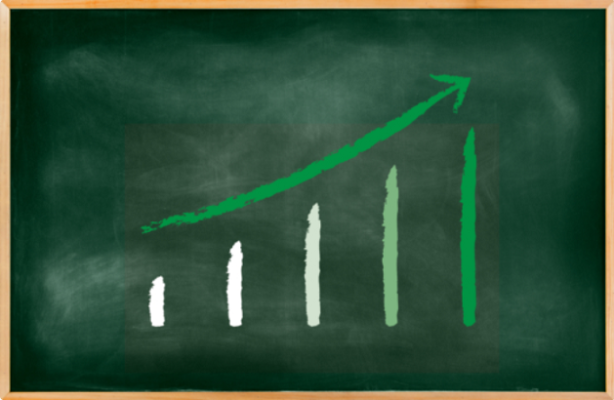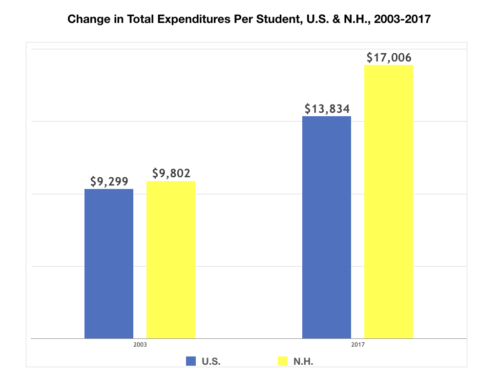A review of public school spending, staffing, and enrollment numbers going back to the 1994-95 school year might surprise a lot of Granite Staters who have heard for decades that New Hampshire public schools have been underfunded.
We’d like to thank Drew Cline for this Op-Ed. If you have an Op-Ed or LTE. If you would
like us to consider please submit it to Skip@GraniteGrok or Steve@GraniteGrok.com.
The truth is that spending has risen dramatically as enrollment has declined. And much of that new spending was devoted to hiring staff.
Analyzing official state data, we found that:
- Adjusted for inflation, total expenditures in New Hampshire public schools increased by 66 percent between the 1994-95 and 2017-18 school years.
- At the same time, public school enrollment fell by 9 percent.
- Though enrollment was declining, the number of teachers in New Hampshire public schools increased by 23 percent between 1994-95 and 2018-19.
- The number of non-teachers (all other staff) increased by 80 percent from 1994-95 and 2018-19.
- The combination of a staffing surge and an enrollment decline led to smaller student-teacher and student-staff ratios. From 1995-2019, New Hampshire’s student-teacher ratio fell from 15.6 students per teacher to 12.2. The student-staff ratio fell by nearly 50%, from 20 students per staff member in 95 to 10.8 students per staff member in 2019.
- The large spending increases did not produce large increases in average teacher salaries, however. Current spending per student, adjusted for inflation, increased by 77 percent between 1994-95 and 2017-18, yet average teacher salaries increased by only 1 percent, also on an inflation-adjusted basis. (“Current spending” excludes capital and some other expenses that are included in “total expenditures.” It’s the spending from which districts pay staff salaries.)
These findings come from a new report, to be released Monday. It will feature a spreadsheet that details these data for each school district in the state. Some districts experienced enrollment increases since 1994-95. (Bow, Hopkinton, Wilton-Lyndeboro, for example.) But most experienced declining enrollment. And as enrollment fell statewide, spending and staffing continued to increase.
New Hampshire’s total expenditures per student have risen faster than the national average.
In 2003, New Hampshire’s total expenditures per student were only slightly above the national average. The U.S. average that year was $9,299, and the New Hampshire figure was $9,802. By 2017, the U.S. average had risen to $13,834, but New Hampshire’s had grown to $17,006. (These figures are in nominal, not inflation-adjusted, dollars.)
In the last two years, there has been an increased focus on public school funding in New Hampshire. A wide variety of proposals have been floated for how public education could be funded or delivered differently. Amid all of this disagreement, one assertion that often goes unchallenged is the claim that public schools have suffered long-term reductions in overall funding. That simply isn’t true. As enrollment has declined, spending has increased.
Any discussion of public education funding should begin by acknowledging this basic fact.
Drew Cline is the President of the Josiah Bartlett Center for Public Policy and the Chairman of the New Hampshire State Board of Education.


